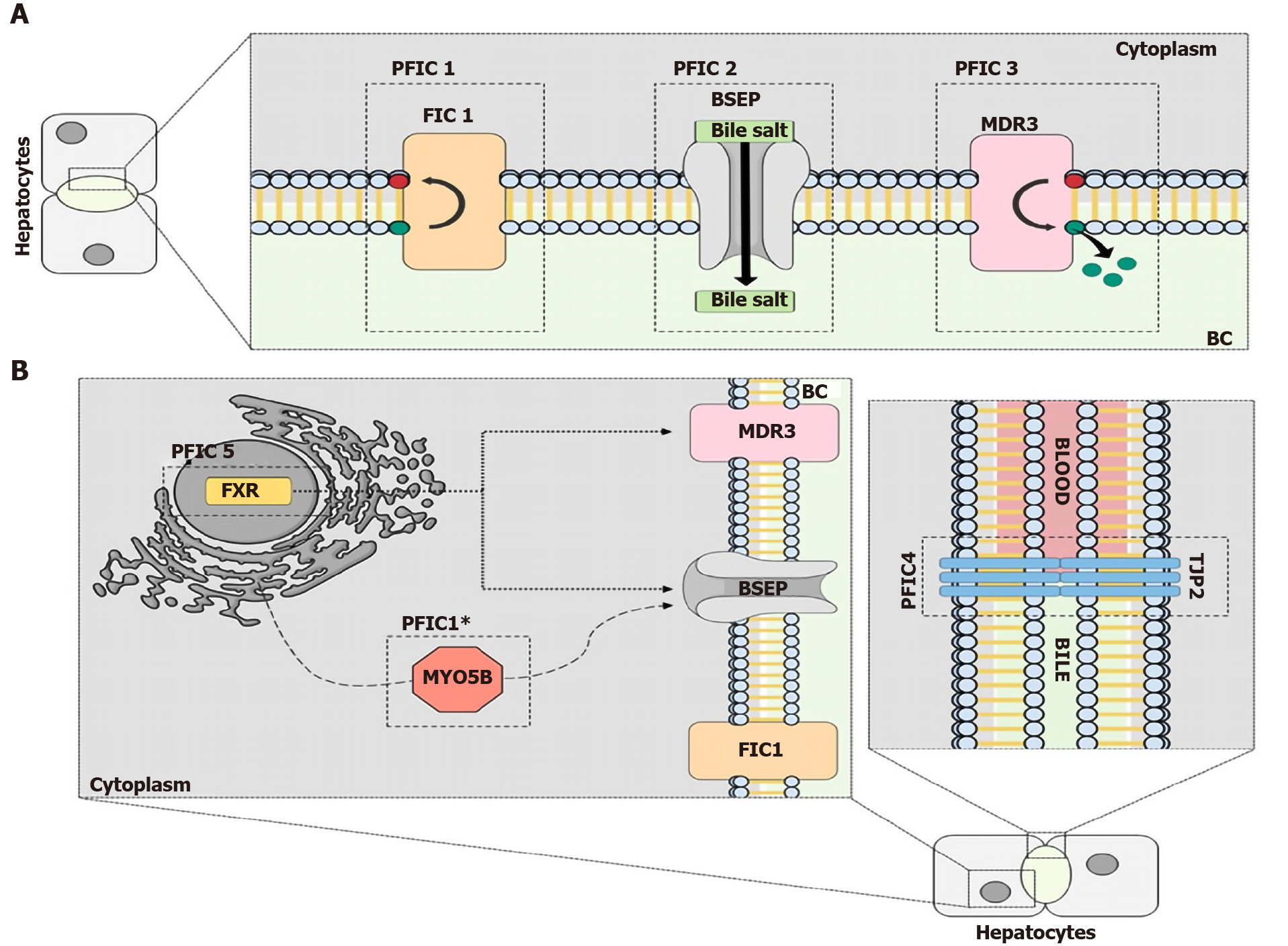Copyright
©The Author(s) 2020.
World J Gastroenterol. Dec 21, 2020; 26(47): 7470-7484
Published online Dec 21, 2020. doi: 10.3748/wjg.v26.i47.7470
Published online Dec 21, 2020. doi: 10.3748/wjg.v26.i47.7470
Figure 2 The molecular mechanisms behind progressive familial intrahepatic cholestasis.
A: The classic types of Progressive Familial Intrahepatic Cholestasis (PFIC). PFIC 1 is related to mutations in the genes that encode the flippase familial intrahepatic cholestasis 1, which flips phospholipids in the plasma membrane. Mutations in the bile salt export pump (BSEP) protein, a bile salt transporter, results in PFIC 2. The third type of PFIC is caused by mutations in the gene that encodes the Multidrug resistance class 3 glycoprotein (MDR3) protein, another lipid flippase; B: The newer types of PFIC. Mutations in the tight junction protein-2 protein, which prevents the mixing of blood and bile acids, are responsible for PFIC 4. PFIC 5 is a result of mutations in the farnesoid X receptor protein, a transcription factor important for BSEP and MDR3 ecpression. Mutations in Myosin VB result in a PFIC phenotype because the trafficking of the BSEP protein from the endoplasmic reticulum to the plasma membrane is disrupted. PFIC: Progressive Familial Intrahepatic Cholestasis; FIC1: Familial intrahepatic cholestasis 1; BSEP: Bile salt export pump; MDR3: Multidrug resistance class 3 glycoprotein; TJP2: Tight junction protein-2; FXR: Farnesoid X receptor.
- Citation: Amirneni S, Haep N, Gad MA, Soto-Gutierrez A, Squires JE, Florentino RM. Molecular overview of progressive familial intrahepatic cholestasis. World J Gastroenterol 2020; 26(47): 7470-7484
- URL: https://www.wjgnet.com/1007-9327/full/v26/i47/7470.htm
- DOI: https://dx.doi.org/10.3748/wjg.v26.i47.7470









